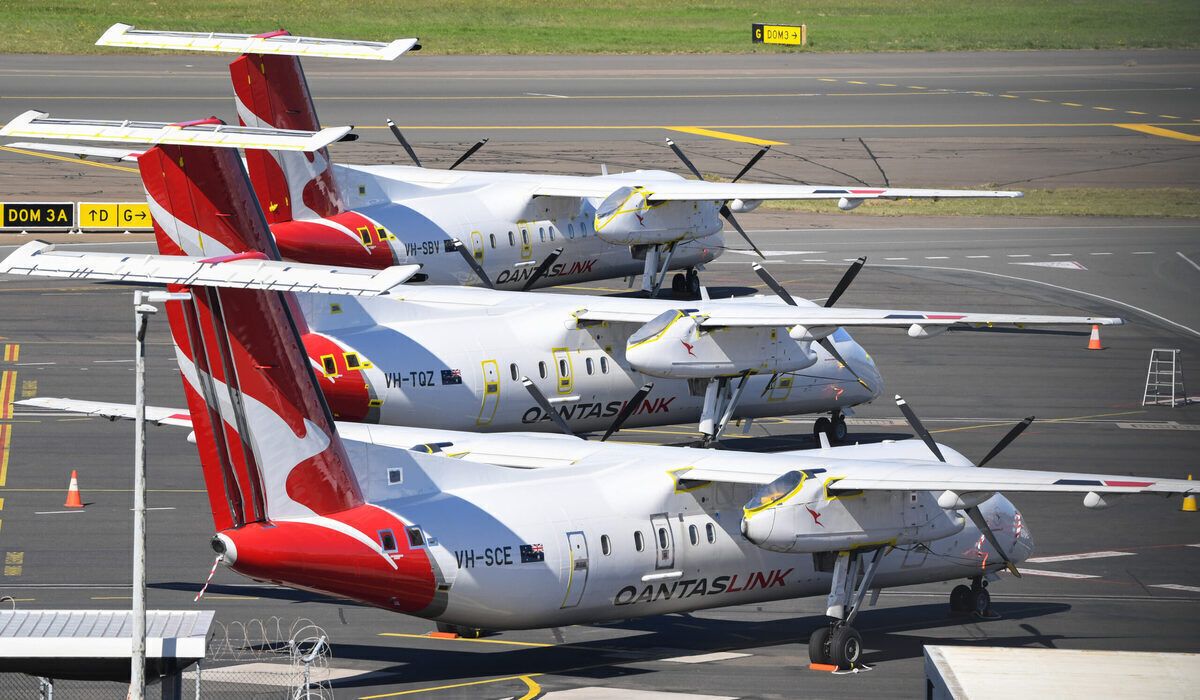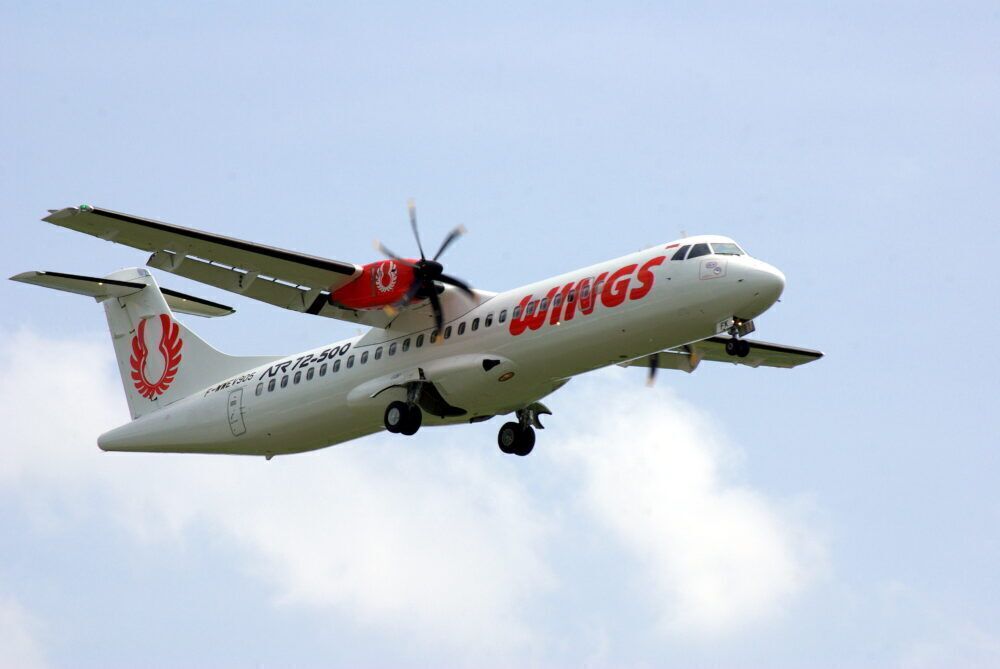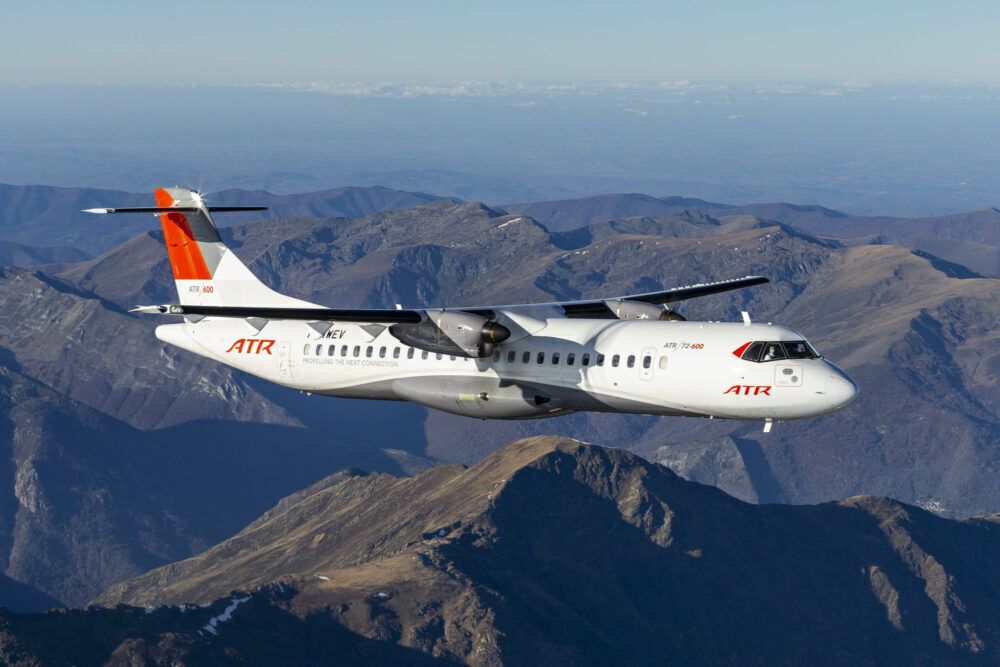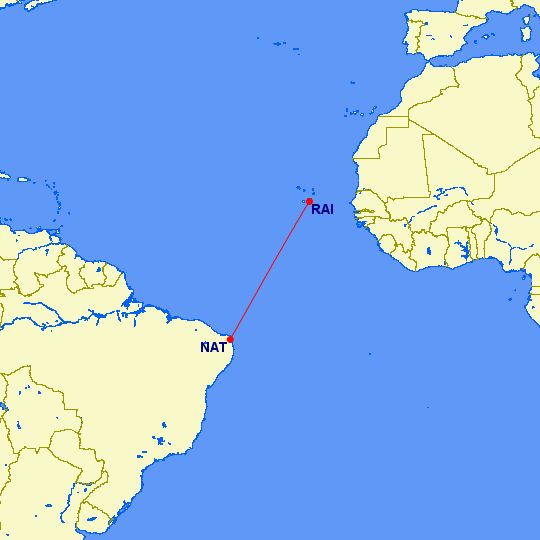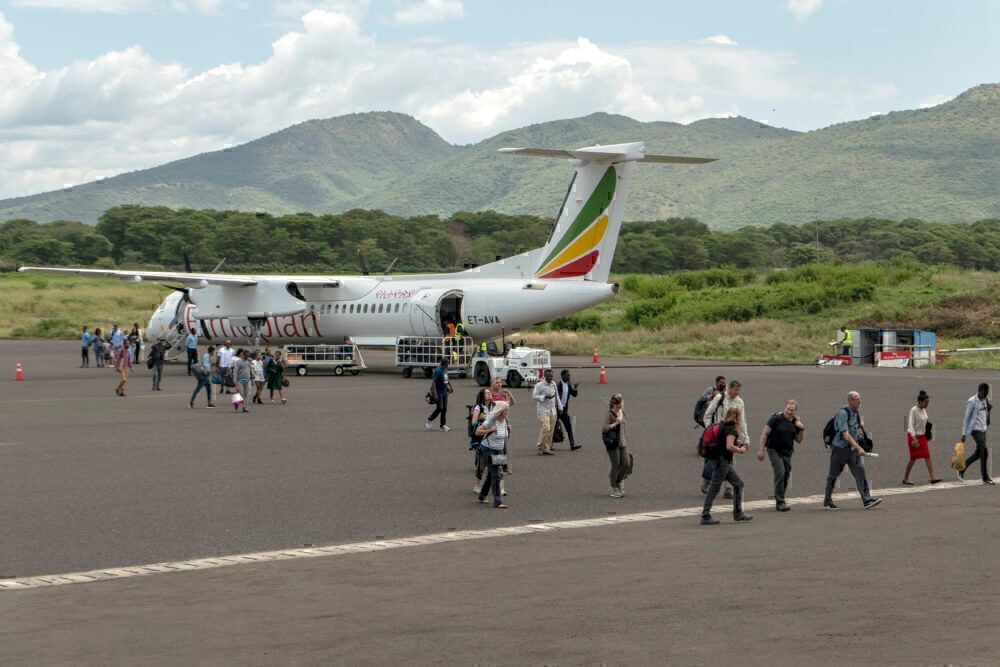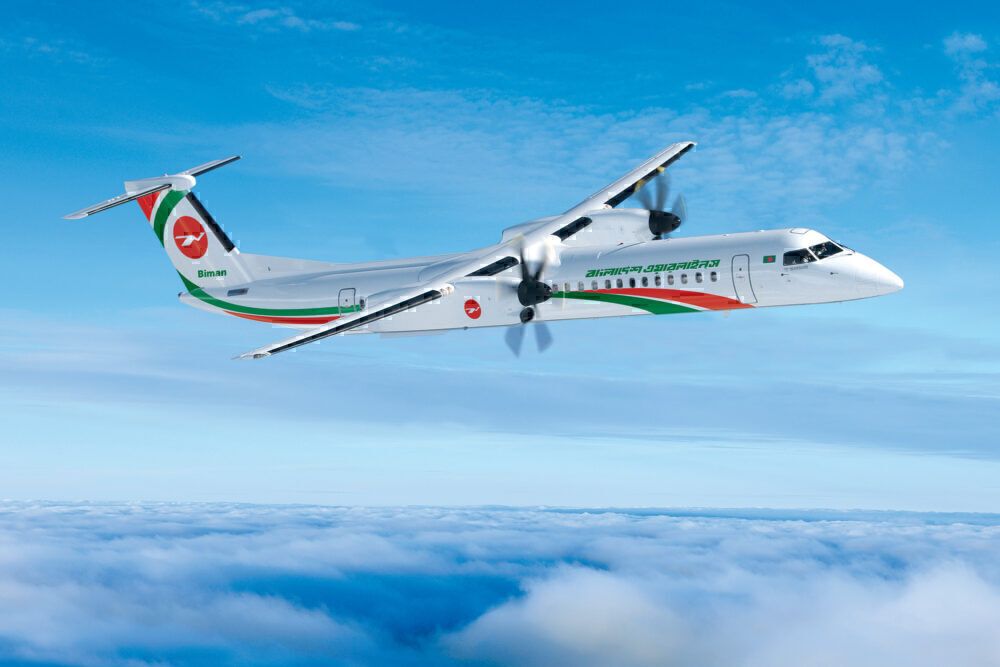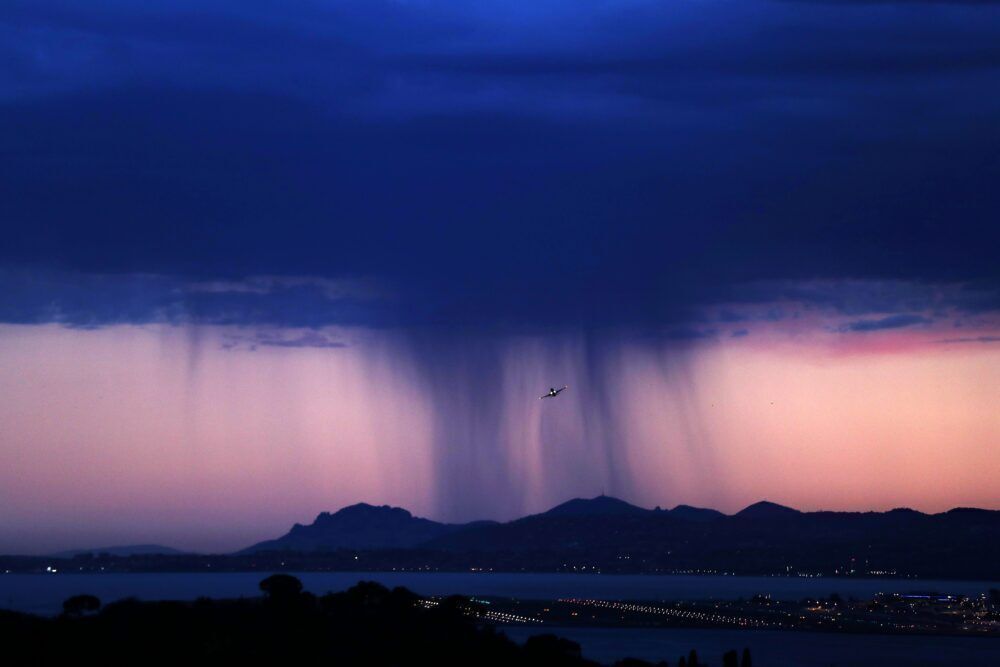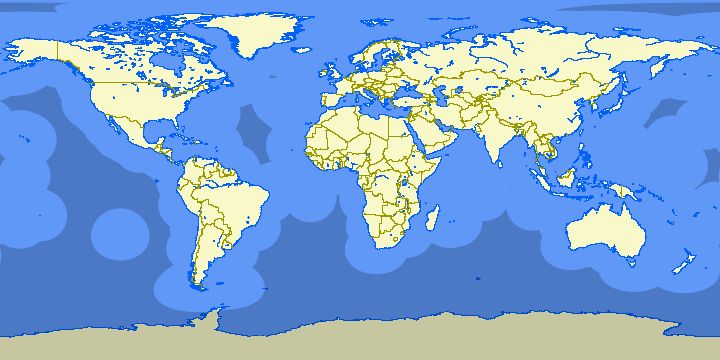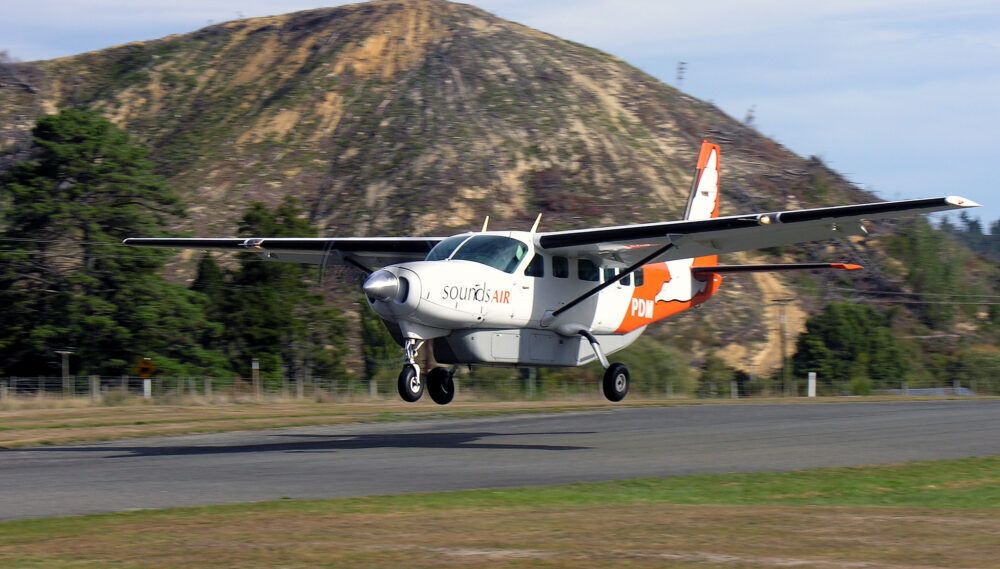Turboprop aircraft are used all over the world, yet most are manufactured in Europe or North America. With their limited range, this can lead to some complex multi-leg delivery flights. This is, of course, the case with larger jets too, but these are much more straightforward deliveries with their increased range. Let's take a look at how turboprops get delivered to customers a long way away.
Building and delivering aircraft
The most numerous commercial turboprops are the ATR series (ATR 42 and ATR 72) and the Dash 8. These are assembled in France and Canada, respectively. Whilst some components are made overseas, neither company has an overseas production line and all completed aircraft are shipped out from these bases.
Some aircraft, particularly smaller and simpler turboprops, may be shipped by land and sea. But for larger aircraft, they are usually flown to their customer - a process known as ferrying. Aircraft may also need ferrying after first delivery - onto another buyer, for maintenance checks, or finally to storage or scrap.
ATR and Dash 8 customers are located worldwide - and certainly not just in Europe and North America. The largest customer for the ATR 72 is Wings Air in Indonesia (part of Lion Air). Brazilian airline Azul Linhas Aereas, Indian airline IndiGo, Thai airline Bangkok Airways, and Air New Zealand all operate sizeable fleets (amongst many others).
Major overseas operators of the Dash 8 include QantasLink in Australia, Norwegian airline Widerøe, Japanese ANA, and Ethiopian Airlines. All these airlines have had aircraft delivered at some point, but how?
The range of the ATR 72, for example, is 758 NM (1,404 kilometers). For the ATR 42, it is 703 NM (1,302 kilometers). The Dash 8 extends this to 1,102 NM (2,040 kilometers).
Clearly, any long-distance ferry flight is going to involve several stops. But, there is a lot more involved than just stopping along the way.
Stay informed: Sign up for our daily and weekly aviation news digests.
Increasing the range
The first thing to realize is that the quoted range of any aircraft is based on its commercial operation. Without passengers or cargo, and possibly with some of the interior fittings removed and shipped separately, an operator can extend this range.
Extra fuel tanks are also a possibility on some aircraft. This is a commonly used technique for smaller, lighter aircraft. Two to four seat general aviation aircraft, for example, have an even shorter range and still often need to be ferried across large distances. They will sometimes have additional fuel storage fitted in the main cabin of the aircraft to extend range.
But this is less common with larger turboprops (there are no reports of it happening with ATR aircraft, for example). Adding extra tanks would be technically challenging and require significant modification. And the range is already high enough to allow feasible long-distance routes, with stops.
This sometimes happens with smaller jet aircraft as well. Hawaiian Airlines is known to do this with its Boeing 717 aircraft to fly them from (and to) the mainland for delivery and service. It adds additional fuel storage in the main cabin to extend the range.
Economic cruising
The range can also be increased by flying differently. In commercial service, aircraft will use cruise at a maximum safe speed. But for technical or ferry flights, the range can be prioritized over flight time and a more economical cruise speed chosen.
There are also techniques for saving fuel (and thus extending range) in the climb and when descending. ATR publishes guidance for this for the ATR 42 and 72, showing how different power profiles can improve efficiency.
Discussion among pilots on airliners.net suggests that the range of the ATR 72 can be increased to as much as 2,000 NM (3,700 kilometers) and a flight time of eight hours.
There are plenty of examples of ferry flights with sectors much longer than the published commercial range. Azul, for example, has flown Santiago, Cape Verde (RAI) to Natal, Brazil (NAT), as part of its ATR 72 ferry flights. This is a distance of 2,639 kilometers - far exceeding the advertised range.
And LIAT, based in Antigua and Barbuda, is reported to have flown its ATR 72 from Fortaleza, Brazil (FOR) direct to Antigua (ANU) - an impressive 3,448 kilometers (it retired the ATR 72 in 2020 but still operates the ATR 42).
Making plenty of stops
No matter how much extra range is squeezed out of the aircraft, long-distance ferry flights will involve many stops to refuel. In some ways, this goes back to the early days of aviation when any long-haul route would be a multiple-stop, often a multiple-day affair.
Coming over the Atlantic (and for flights from Canada), stops can be made in Canada, Greenland, or Iceland before reaching the UK. For transpacific routes, operators would usually choose to take an Atlantic route and then cross Europe and Asia. Transpacific routes via Alaska are possible, but distances are longer and weather conditions tougher.
Ethiopian Airlines, for example, is known to have used the following route for Dash 8 deliveries: Toronto – Goose Bay – Keflavik – Manchester – Rome – Cairo – Addis Abada.
Biman Bangladesh Airlines took on a new Dash 8 (to join its leased aircraft) in November 2020. According to Airways Magazine, this was ferried on a three-day route from Canada with stops in Goose Bay, Keflavik, Rotterdam, Heraklion and Muscat.
For an extreme example consider the delivery of an ATR 72 to French Polynesian airline Air Tahiti - ferried from Toulouse to Papeete. As a direct flight, this would be over 16,000 kilometers - so out of scope for all but the newest ultra-long-haul routes now appearing.
With an ATR 72, this involved seven stops - Toulouse - Cyprus - Dubai (Al Maktoum) - Chennai, India - Kuala Lumpur, Malaysia - Kupang, Indonesia - Cairns, Australis - Fiji - Papeete. The crew even produced a short video condensing the route and their ferrying experience:
Timing flights for weather and wind conditions
Along with choosing a route and making plenty of stops, ferry flights can be planned to take full advantage of the weather. With strong headwinds, for example, the range will be significantly decreased. So for some sectors, the flight will be planned around winds, or the aircraft will simply wait until conditions are right.
The jetstream has a significant effect on any long flight. These air currents flow from west to east, making easterly flights faster than westerly ones. This will particularly affect transatlantic flights to the Americas, which may need more stops than the other way. As with normal commercial flights, the route and flight level can be chosen to take advantage of the jetstream or minimize the impact.
It may make sense to wait until jetstream conditions are optimal. It certainly does for other weather conditions too. With operations closer to the limits, and fewer diversion airports in remote regions, minimizing weather risk is important.
No ETOPS regulations
At this point, you may be wondering how some of these flights and routes are possible, given the limitations placed on twin-engine operations and turboprops. The ATR 42 and 72 both carry ETOPS 120 ratings (allowing them to fly up to 120 minutes from a suitable diversion airport). The Dash 8 does not have an enhanced ETOPS rating. This leaves large parts of oceanic areas, in particular, inaccessible for normal routes.
Aircraft do not need to meet these ETOPS requirements on a ferry flight and can therefore fly farther from diversion airports. This is permitted as the flights are not commercial (as mandated under FAA regulations Part 91).
Brave flying
Ferry flying has a reputation for being dangerous and a risky undertaking. This is truer for smaller aircraft, but there is still some risk to pushing the limits of larger turboprops. Ferry flights involve flying close to range limits, encountering varied weather, and using remote and often more challenging airports.
Risks are much higher with smaller aircraft. Light aircraft have even shorter ranges (again extended using additional fuel and economical flying) and fly much lower, so they encounter more extreme weather. Transatlantic routes in such an aircraft are a challenging task.
This is discussed well in a BBC article, where the son of a ferry pilot who died whilst flying in Canada recalls his father's work and looks at the industry today. Ultimately, the author explains, it is not a job for mavericks - staying safe comes down to detailed planning and only flying in the right conditions.
Ferry flying pushes the limits of turboprop and makes for some exciting routes. There are plenty more examples of aircraft ferry routes - feel free to discuss more in the comments.

